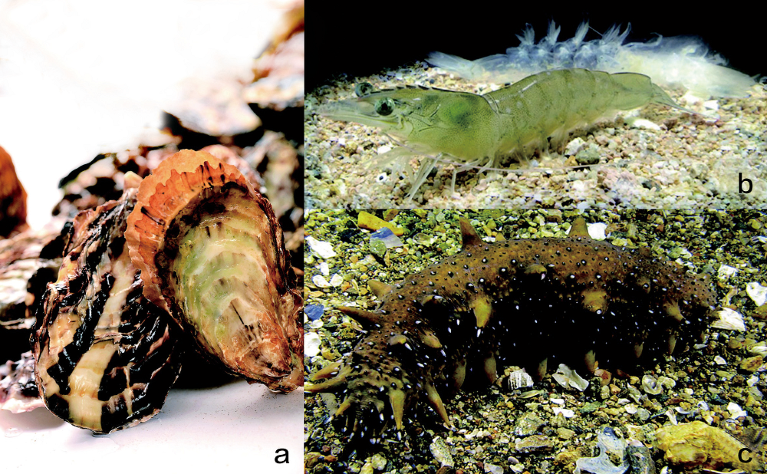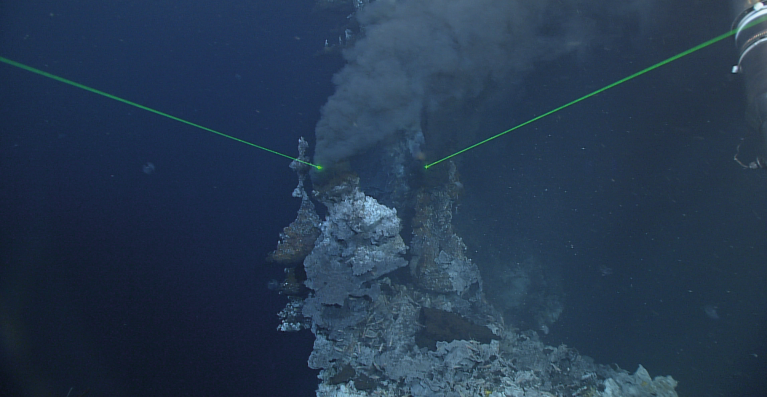
The deep-sea sampling activity organized by IOCAS has led to the collection of diverse marine samples.Credit: IOCAS
China’s aquaculture production leads the world, exceeding 40 million tonnes annually. Underlying this success is mass cultivation of three important food products that were formerly imported: kelp, Pacific white shrimp, and bay scallops, making them widely available for Chinese consumers.
Research at the Institute of Oceanology, Chinese Academy of Sciences (IOCAS) leads to improved breeding grounds for these aquaculture species. From fundamental studies on marine plants and animals, to the sustainable use of marine bio-resources, researchers at IOCAS’s Experimental Marine Biological Laboratory have revealed the biological processes of marine organisms, including their reproduction, growth, physiological and biochemical development, metabolism, immunity, and genetic variation, and developed leading technologies for marine agriculture, playing a key role in establishing China as a leader in aquaculture and fishing industries.
Investigating marine biology for aquaculture
Kelp is a common food on Chinese dining tables now, but it was once available only as an import from abroad. Genetic studies on algae by IOCAS researchers have led to hybrid technologies for breeding new cultivars in China. Having built an algae germplasm bank, they revealed the genetic expressions of algae reproductive organs, completed whole-genome assembly of wakame, an annual algae, and developed a haploid cloning technique for breeding kelp and wakame, solving the problem of hybrid sterility.
Researchers from the IOCAS laboratory have also studied economically valuable aquaculture organisms, like Pacific white shrimp, Pacific oyster, and sea cucumber, contributing to their selective breeding. IOCAS was the first to construct whole-genome maps of these organisms, decoding their genes, and shedding light on their genomic selection.

IOCAS is the first to construct whole-genome maps of Pacific oyster (a), Pacific white shrimp (b), and sea cucumber (c), contributing to their molecular breeding.Credit: IOCAS
For Pacific white shrimps, IOCAS researchers found that the expansion of genes pertaining to vision and locomotion has enabled advantageous eyesight and rapid nerve signal conduction, allowing shrimps to better adapt to their habitat. Frequent moulting can also be explained by an intensified signal pathway through gene expansion and positive selection. The findings have potential to accelerate genetic improvements in shrimp culture, enhancing aquaculture production.
A promising model animal for regenerative medicine, sea cucumber has long fascinated scientists. But progress exploring its genetic underpinnings is slow. Through genome sequencing, the IOCAS team has identified genes highly expressed during visceral regeneration, which might be responsible for the regenerative capacity of sea cucumbers. Their findings on how sea cucumbers restore damaged or lost body parts may bring new insights for regenerative medicine.
IOCAS was also among the first to elucidate the molecular and cellular antimicrobial mechanisms of marine fish and shellfish. Their research unveils fundamental differences between bony fish and mammals in pyroptosis, an inflammatory form of programmed cell death, and expands understanding about innate immunity of bony fish.
These basic biological studies have informed developing technologies to make best use of bio-resources. From algae and marine microbiomes, IOCAS researchers have developed natural products with antibacterial or anti-cancer benefits.
In light of the lack of effective drugs for jellyfish stings, they have studied toxin structure, composition, mechanisms, and detoxification targets, leading to an antidote for jellyfish stings. The technology was transferred at a licencing fee of RMB 10.5 million, offering potential for health and economic benefits.
Exploring the deep sea
Marine biology research at IOCAS also extends to the deep sea, whose extreme environment hosts unique life forms and bio-resources. To go deeper, view clearly, and collect more samples, demands advanced technologies. Drawing on the capabilities of a 4,700-tonne maritime research vessel, Kexue, the first of its kind in China, IOCAS has built a systematic platform, incorporating a remotely operated vehicle (ROV), Faxian, capable of working 4,500 metres under water, and other advanced equipment for submarine and extreme environment inspections. This enables comprehensive investigation of previously unchartered territories, including seamounts, hydrothermal vents, and cold seeps, which are regarded as the most likely places to find clues to life's origins.

The ROV designed by IOCAS enables sampling and detection 4,500 metres under water, allowing comprehensive investigation of cold seeps and hydrothermal vents.Credit: IOCAS
To explore the habitability of the Earth and the origins of life, IOCAS’s Center for Deep Sea Research studies deep-sea carbon and oxygen recycling. Using a specially developed in-situ Raman insertion probe (RiP) system, researchers found supercritical CO2, a fluid state of CO2 from the Earth’s early history, and identified unique Raman peaks. Based on the finding, they proposed that the interface between atmosphere and hydrosphere was the best place for the formation of amino acids.
Based on geochemical analyses of rock samples from the South China Sea, the centre’s researchers were the first to identify natural carbonated silicate melts, which were found to be transformed to alkali basalts through reactions with the lithospheric mantle. The study offers a new mechanism for explaining the wide distribution of alkali basalts, and suggests that a thin lithosphere facilitates the release of CO₂ stored deep within Earth’s mantle.
Using geochemical data from rocks associated with volcanic arcs, IOCAS researchers found dramatic decreases of thorium-uranium ratios in arc rocks that occurred in line with the onset of the Great Oxidation Event and the Neoproterozoic Oxygenation Event, two periods that experienced significant rises in atmospheric oxygen. This shows the effectiveness of using igneous geochemistry to determine the timing of atmospheric oxygenation events.
Deep-sea exploration is also a national strategic goal, for its essential role in preserving biodiversity and ecological health, enshrined by international agreements.
At IOCAS’s Laboratory of Marine Organism Taxonomy & Phylogeny (MOTP) Studies, a pioneer in surveys on marine biodiversity, researchers have explored nine seamounts in the tropical Western Pacific, hydrothermal fluids from Manus Basin, and the South China Sea cold seeps for biodiversity research.
As China’s largest deep-sea sampling activity with the most diverse samples to date, it led to the discovery of two new families, one new subfamily, three new genera, and more than 100 new species. A bio sample bank has been established, including 6,000 massive and large-size bio samples, covering 600-plus deep-sea species. More than 8,000 bacterial strains were isolated and cultured, and 46 new bacterial species were discovered. The study has enriched our understanding of deep-sea biodiversity.
In the deep-sea environment, seamounts, home to diverse biomes, are valuable ecosystems for biodiversity studies, yet, are inadequately investigated. IOCAS’s biodiversity analysis of three adjacent seamounts in the Western Pacific showed that of the species found at the seamounts, less than 5% were found at all three. This illustrates the uniqueness of species in each seamount, and the low connectivity between them, emphasizing the value of protecting biodiversity. It also provides the basis for studying geographic distribution and connectivity of deep-sea organisms.
IOCAS's deep-sea explorations also inspired fundamental research into the adaptive strategies and evolutionary histories of marine organisms and the origin of life. Particular attention was devoted to scale worms (Polynoidae), a shrimp family (Alvinocarididae), and deep-sea mussels (Bathymodiolinae), all of which were found to have the highest biodiversity in the Western Pacific. Based on this finding, IOCAS researchers proposed that hydrothermal areas in the Western Pacific could be the origin of Polynoidae. Molecular development studies on Alvinocarididae suggested an evolutionary model from shallow sea, to deep sea, and then hydrothermal vents for this species, highlighting the key role of Western Pacific hydrothermal areas in the evolution histories and distributions of deep-sea organisms. Comprehensive studies on deep-sea mussels underlie how they interact with their symbionts to survive in the vents and/or cold seeps. A dynamic model was proposed to highlight the crucial roles of lysosome and innate immune systems in the host-symbiont interactions.


